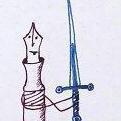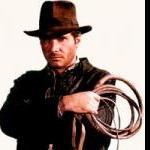Leaderboard
Popular Content
Showing content with the highest reputation on 03/13/25 in all areas
-

Priesthood progression
Vort and one other reacted to Just_A_Guy for a topic
Something that gobsmacked me a couple weeks ago while perusing D&C 107, and of which I’m still pondering the significance (or lack thereof): Technically, scripturally, there’s no such thing as a quorum of deacons, or teachers, or priests, or elders. These groups sit in “council” in groups whose size is scripturally limited; but they are not called “quorums”. Scripturally a “quorum” is a body with authority to govern the church-at-large, and there are only five of them: —The First Presidency —The Q12 —A group consisting of all 70s in the Church —A group consisting of all stake high councilors in the Church —the high council in “Zion” (originally Missouri and later for a time, IIRC, a specific stake in SLC).2 points -

Priesthood progression
Vort and one other reacted to mordorbund for a topic
If you’re interested in the history of ordaining young men to the Aaronic Priesthood, you may enjoy reading From Men to Boys, LDS Aaronic Priesthood Offices, 1829-1996, by William G. Hartley (pages 80-136). As for the duties falling by the wayside, I agree that deacons are not given many opportunities for exhortation (except once or twice a year when they’re asked to give a sermon in sacrament meeting) but teachers fulfill their duties through ministering. I remember doing so at 14 and it still continues today.2 points -

The Alpha and the Omega
Just_A_Guy reacted to Carborendum for a topic
I have wondered since I was a child what this phrase meant. Answer given: The beginning and the end (referring to the first and last letters of the Greek alphabet). I considered this. It is essentially saying: I am the A and the Z. That makes no sense. The argument goes further to say that Jesus was at the beginning of creation and will be there at the end of the world. Again, this still feels hollow to me. What is the point? We were also at the beginning and will be there at the end. So, I figured there was something about this phrase that must have been a figure of speech in Greek that we're not aware of. That brought me to the theory that IAOmega is a transliteration of YHWH. I'm looking at both alphabets and the meanings, etc. and I find it unconvincing. But what do I know? I'm just a hack. A dozen other theories I've read that don't seem to "click." ********************************* I did finally come across a theory that made sense to me. The Hebrew word אֶמֶת /emet/ = truth starts with the first letter of the Hebrew alphabet (aleph) and ends with the last letter of the Hebrew alphabet (tav). The letter in the middle happens to be equal to our "M", and it is in the middle of the alphabet. So, it implies that truth is the beginning, middle, and end. The word "the" in Hebrew is "et" (את) which is literally comprised of aleph and tav. This made me think about when Jesus said," I am the way, the truth, and the light." We may not know exactly what He said since he spoke in Aramaic (most likely). And we have the history written in Greek. But to think of the idea that He would combine "I am" with the word "truth" and list three things that He is "the" ...X ... makes me think he was playing 4D chess with languages. But how does this line up with the verses in Revelation that actually use the Alpha & Omega verbiage? This is the only one that clearly points to a time/calendar because of the use of the forms of "to be" (I am, I was, I will be = first, middle, & last like "truth"/emet/). Then it ends with "the Almighty." That's curious. What about the other three? This seems more like a status. But the first and the last sounds different in the Greek. What would we think if He said He is the most important (first place) and the least important (last place)? That's a very different meaning. He is the Great I AM. He also decended below all things. He who is least among you... Each of these in some way seems to allude to the fact that because Christ (the Greatest of All) descended below all things (became the least) and opened the gates of hell, so that we might enter in at the strait celestial gates, we can drink of the water of life (the water that Jesus offered the Samaritan woman at the well), partake of the Tree of Life, and inherit Eternal Life.1 point -

Priesthood progression
Just_A_Guy reacted to HaggisShuu for a topic
After reading D&C 20 and I have a question. Why was Priesthood progression formally tied to age in 1908? The revelation makes no mention of age and after reading the roles and responsibilities of each office it doesn't feel like what was intended. For example, if no Elders are present, a priest presides, if no priests a teacher and if no teacher a deacon. Obviously these would be extremely exceptional circumstances, but it doesn't seem reasonable to have potentially an 11 year old preside over sacrament meeting for example. looking at verse 58-59 As ordinations now take place in the year a young man turns 12 and 14, they will usually receive these offices when 11 and 13 respectively. Many children these ages will struggle to warn, expound, teach and invite as they are still very much developing their own knowledge of the gospel and confidence. I do think the age based progression is a good thing, but reading D&C 20 I felt like the things these offices require are all very adult, and quite difficult for children to be effective at. So what motivated the switch to age based progression?1 point -

I Thirst -- A Thought
Carborendum reacted to zil2 for a topic
IMO, John 19:28 requires us to include Psalm 69:21.1 point -

Priesthood progression
Just_A_Guy reacted to Carborendum for a topic
I respectfully disagree. Section 124 should be used to inform those reading Section 107 in this regard. These verses (scriptural) specifically speak to offices that we call Stake Presidents and Elders Quorum Presidents today. The stake-level seventy are defunct. There are apparently other verses that do, indeed, refer to the traditional "at-large" quorums that you mentioned. But I don't see why that would denote exclusivity of other (lesser) bodies that we commonly call quorums as well. The summary at the section heading indicates it is so. This is backed up by the historical record which indicates that the named individuals were officers over local units pursuant to this instruction. ALSO: I believe the significance of section 107 was to dictate quorum sizes and nature of operation: viz. The Aaronic is ward-based, and the Melchizedek is Stake-based. Although we seem to treat the Elders' quorum today as a ward unit. But the details about the how, whys, etc. are sprinkled throughout the section to the point that it is difficult to summarize.1 point -

Priesthood progression
Just_A_Guy reacted to The Folk Prophet for a topic
^This. Nice that we have a living prophet and revelation guiding the church, eh? Isn't "at-large" a bit confusing and subjective here? I mean you mention the 70s and high councilors. Surely the 70s and high councilors don't "govern" the church "at-large" (quote marks implying subjective words).1 point -

Priesthood progression
SilentOne reacted to HaggisShuu for a topic
A totally sensible explanation. Thank you. Looking at the responsibilities each office holds a second time, I think a large part comes down to how the parents prepare their children to receive an office.1 point -
It’s a bit more complicated than that. Some people genuinely think government is a good thing, and they are gravely concerned about what will be taken away from them. It’s not what I believe-frankly when the government shuts down I want to drink champagne. I love what DOGE claims to but I see the other side’s POV.1 point
-

Priesthood progression
Vort reacted to Carborendum for a topic
The population of the church and the nature of wards/stakes at the time. The Church had grown to over 400,000 members ordained to the priesthood. The organization of wards and stakes were haphazard. Not all men were ordained. The practices between wards (bishops) and stakes (stake pres) varied so much that you'd think you were in a completely different Church. Any given ward might have an abundance of Melchizedek priesthood or a single deacon. (I'm exaggerating, but you get the point). Additionally, with many men merely "sitting in the congregation" they felt like there was nothing for them to "do." And when men have nothing to do, they go inactive. It was fairly clear that we had enough males to perform the necessary leadership and liturgical functions. But we needed a system by which to ordain sufficient men to the required offices to perform such duties in each locality. And it was a goal to allow each stake (for the most part) to act independently. Many methods were considered. They realized that if they based it on age, it was a systematic way of "forcing" leadership to look at every male in the ward/stake. It encouraged all males to be ordained as they came of age. They settled on the procedure that eventually evolved into the system we have today. I particularly like it in this day and age because it has become a rite of passage. And in a world where that has been taken away from our society and replaced with activism, influencing, and debauchery as a rite of passage, I'm very thankful that we (at the very least) have such a thing.1 point -

Priesthood progression
Just_A_Guy reacted to HaggisShuu for a topic
An additional thought: Age based progression seems to have had some side effects within Church culture. A Deacon seems to be treated solely as a sacrament passer, when the office clearly requires so much more to be done. And Teachers who have the responsibilities: Are treated as premium sacrament passers. It seems like Deacons were intended to teach, and Teachers intended to "police" for lack of a better term.1 point

